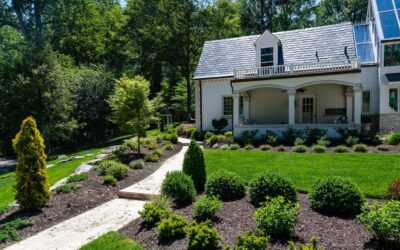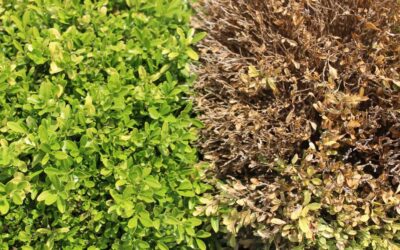Blog Topics
Having trees in your yard is a wonderful way to improve your landscape and property value, but failing to catch a tree disease can lead to problems throughout your landscape. Forests and trees give Virginia much of its natural beauty; however, these trees constantly face threats from pests and diseases.
Many of the signs and symptoms of tree illness can be subtle initially, and when the problem becomes apparent, it is often too late to save the tree. We’ve prepared a breakdown of some of the most common diseases plaguing northern Virginia trees. We’ll give you the symptoms to watch out for and plans for what to do when you notice something wrong with your trees.
Key Takeaways
- Knowing what symptoms to look for can protect your trees from disease outbreaks.
- Diseases typically target the roots, foliage, or stem of a tree.
- Common diseases in northern Virginia include laurel wilt, beech leaf disease, powdery mildew, anthracnose, and thousand cankers disease.
- Many diseases cause discolored or damaged leaves, alerting homeowners to a problem.
- Contact a professional arborist if you believe your trees suffer from a disease or have any other issues affecting their health.
Why Early Detection and Treatment of Tree Diseases Matters
Early detection of tree diseases is vital to stop the spread and save trees. Tree diseases are often contagious, and one diseased tree on your property can lead to an outbreak and damage to the rest of your landscape.
By identifying the signs of disease early, you lower the risk of your tree dying and the disease spreading to other trees. You’ll want to seek professional assistance to conduct regular “checkups” on your trees and provide insight on any potential issues your trees may face.
The Common Targets of Tree Diseases
Tree diseases typically attack three main areas of the tree: the roots, stem, and foliage. Here’s a quick breakdown of these three areas:
- Root diseases: Root diseases typically limit a tree’s ability to take in nutrients and water from the soil, limiting the tree’s ability to grow and remain stable. Common root diseases include root rots and vascular occlusions.
- Foliage diseases: Some of the most common tree diseases in Virginia are foliage diseases, including anthracnoses and powdery mildews. These diseases attack the leaves of a tree, and you may notice leaves becoming discolored or prematurely dropping.
- Stem Diseases: Stem diseases cause damage in the form of cankers (infected bark areas), wilts (restricted water and nutrient transportation), and galls (abnormal growths). Common stem diseases in Virginia include oak wilt and thousand cankers disease.
Each of these areas is susceptible to different diseases, and regularly checking them for signs of infection or damage will protect your trees from deadly diseases.
Common Tree Diseases of Virginia
Now that we’ve established the basics of how tree diseases attack trees and why they should concern all homeowners let’s examine some common diseases in Northern Virginia and what to look for to avoid dead trees or an outbreak of a contagious tree disease.
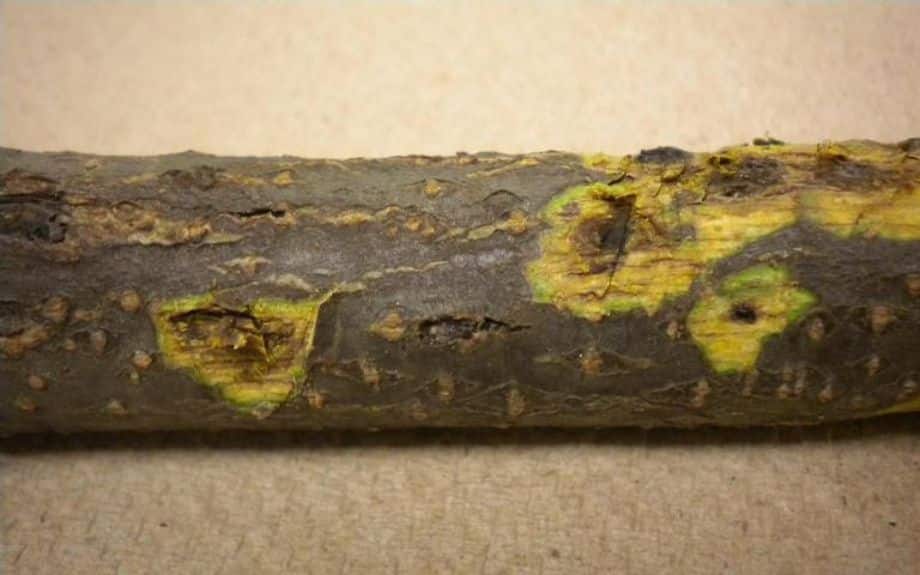
A close up look on thousand canker disease on a tree by Elizabeth Bush, Virginia Polytechnic Institute and State University, Bugwood.org
Thousand Cankers Disease
Thousand cankers disease targets walnut trees (Juglans spp.) and is highly lethal to those in that family, especially black walnut trees. The fungal pathogen Geosmithia morbida causes the disease, and the walnut twig beetle (Pityophthorus juglandis) spreads the disease to new trees.
The walnut twig beetle adults and larvae create galleries underneath the bark and spread the fungus to the tree. The beetles rely on the fungus for food, while the fungus needs the beetles to transport its spores to new hosts, creating a symbiotic relationship.
This illness is a relatively new concern for arborists, as thousand cankers disease was first observed on the West Coast in the 1990s. Though many hoped it would remain contained to the western part of the United States, it has since spread to our side of the country. Fairfax County first reported a confirmed case of thousand cankers disease in 2012, which remains a concern for residents.
Symptoms and Damage
- Dead branches
- Wilting, yellowing leaves when they should be healthy
- Small cankers (most cankers appear under the surface of the bark)
- Dark amber stain on the bark
- Entrance holes created by bark beetle galleries
Environmental Conditions
Symptoms typically become more prevalent in the summer when beetle activity is at its highest. Trees suffering from stress are more susceptible to thousand cankers diseases; be alert for any changes in your trees during a dry period and work to keep your tree stress-free.
Managing Thousand Cankers Disease
There is no known cure for thousand cankers disease at this time, making early detection and mitigation methods essential to limiting the spread. Do not transport a walnut tree with the infection to a new area, and avoid bringing in firewood that may be carrying the disease from another municipality that is dealing with an outbreak of thousand cankers disease.

Powdery mildew on leaves, photo by Elizabeth Bush, Virginia Polytechnic Institute and State University, Bugwood.org
Powdery Mildew
Powdery mildew affects plants of all sizes and is a widespread fungal disease in America. The disease comes from several different fungi in the family Erysiphaceae. Powdery mildew threatens many popular ornamental trees and plants in Virginia, including dogwoods and crabapples.
Powdery mildew spreads through the air as the spores from the fungus move from one plant to another to continue its lifespan. When the spores land on a new plant, they will quickly germinate to start a new infection and repeat the process.
Powdery mildew does not typically kill trees but attacks the tree’s leaves and creates unsightly plants. Powdery mildew will also sometimes harm fruit production, as witnessed by the Connecticut government in tomato plants.
Symptoms and Damage of Powdery Mildew
- White, powdery fungus growing on the leaves is the most prominent sign (looks similar to talcum powder)
- Twisted or wilted leaves
Environmental Conditions
Powdery mildew often occurs when the weather warms up. Some of the common factors contributing to more powdery mildew include:
- Temperatures between 70 and 80 degrees Fahrenheit
- Low humidity during the day
- High humidity throughout the night
In periods of high humidity, the fungus forms more spores, while during times of low humidity, we typically see higher spore dispersal.
The conditions of a greenhouse are often perfect for spreading powdery mildew, so if you have one on your property, you’ll want to monitor for any potential spread.
Managing Powdery Mildew
Unlike other diseases on this list, powdery mildew is treatable, and if you detect it early, you can save the plant. As soon as you notice the symptoms, contact an arborist about applying fungicides to kill the fungus and stop its spread to other ornamental plants in your yard.
WARNING: Pesticides can be dangerous, and you should opt to have a professional, like a member of our team at Riverbend Landscapes & Tree Service, to avoid any danger of misapplication.
Several fungicides have shown the ability to treat the fungi causing powdery mildew on ornamental trees and bushes, including:
- Triadimefon
- Myclobutanil
- Propiconazole
- Triflumizole
- Funginex
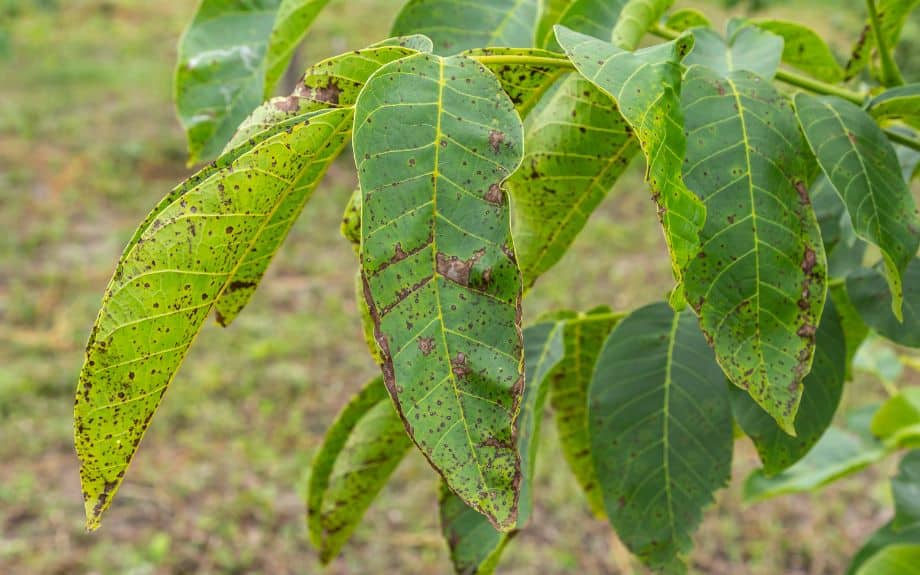
Anthracnose
Anthracnose is not a specific disease but a group of related fungal diseases that attack the leaves on numerous common trees in Virginia. The trees most at risk of damage from anthracnose are sycamore, white oak, elm, dogwood, and maple.
The fungi causing anthracnose tend to attack new growth and buds on a tree. The fungi exist in the growth in the winter before they spread in the spring months when we see warmer temperatures in Northern Virginia. In the spring, splashing water can transmit the fungal spores to transfer the disease to new hosts. The fungal spores may also transfer over the air.
This disease will likely not cause fatal damage to a tree but will result in poor-looking trees in your yard.
Damage and Symptoms
- Tan or blown blotches on young leaves
- Curled leaves
- Leaf drop in spring with a severe infection
- Small orange blisters on young branches
Environmental Conditions
The spread of anthracnose is most common in spring when the weather is cool and wet, typically between 50 and 68 degrees. The disease occasionally spreads during the summer if we see unseasonably cool, wet weather.
Managing Anthracnose
For the most part, you won’t need to do much to combat anthracnose. Infected leaves that fall off will likely have a second growth during the summer.
In some extreme cases, an arborist may suggest a fungicide treatment to control the spread.
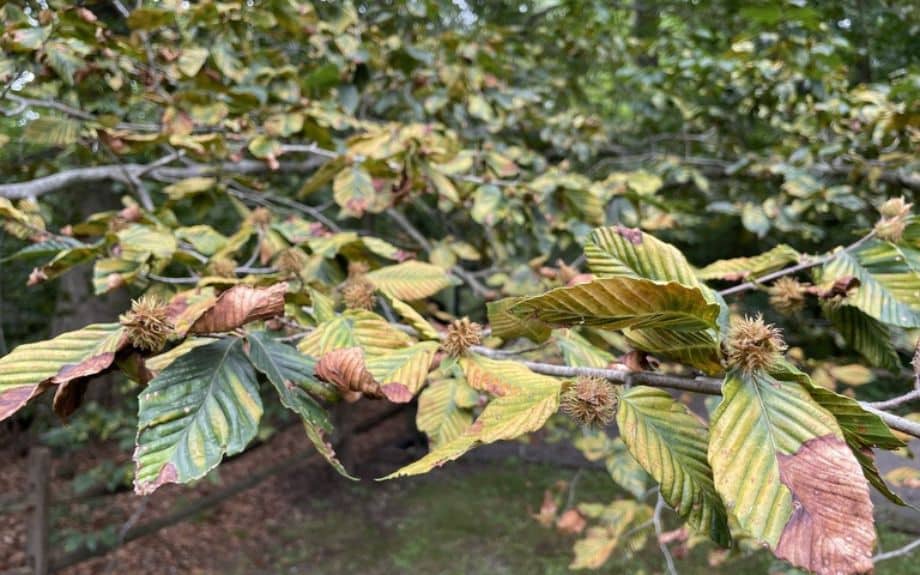
A tree with beech leaf disease, photo by Matthew Borden, Bartlett Tree Experts, Bugwood.org
Beech Leaf Disease
If you have any native or ornamental beech trees on your property, you should be on the lookout for beech leaf disease. Beech leaf disease is fatal to beech trees regardless of age, making early detection vital to avoiding an outbreak.
Much of our understanding of beech leaf disease constantly changes as new research and knowledge emerge. Generally, we know a foliar nematode, Litylenchus crenatae mccannii, is responsible for spreading the disease to beech trees.
The disease is relatively new to our area, with the first detection in Virginia in 2021 in nearby Prince William County.
Symptoms and Damage
- New leaves on American beech trees display dark bands between leaf veins
- American beech leaves may look crinkled, smaller, or leathery
- European beech leaves may appear banded or show signs of tattering
- Heavily infected trees may have overwintering buds die
- Heavily infected tree’s leaves may fall off in May
Environmental Conditions
We are still learning about the factors that make beech leaf disease more common in our state. The best practice is to keep your tree healthy and unstressed to give it a better chance at resisting or surviving the disease.
Managing Beech Leaf Disease
Treatments for beech leaf disease are constantly changing as we learn more about the disease. The state government of Connecticut has suggested using a phosphite product sold as potassium fertilizer to combat the spread in smaller beech trees.
Our team can help you prepare a treatment plan if you believe you have an outbreak of beech leaf disease.
PRO TIP: If you want to learn more about the spread of beech leaf disease and its symptoms, consult our previous post on the topic.

Laurel Wilt on trees by Ronald F. Billings, Texas A&M Forest Service , Bugwood.org
Laurel Wilt
Laurel wilt is a new concern for us in Virginia, with the first confirmed case appearing in Scott County in 2021. The fungus Raffaelea lauricola causes laurel wilt in members of the laurel family. Most pertinent for Fairfax County is that the disease can kill sassafras (Sassafras albidum) trees. These trees are widespread throughout the state, making early detection of laurel wilt vital to avoid its spread.
The fungus arrives in your tree via the redbay ambrosia beetle (Xyleborus glabratus). These invasive pests carry the fungal spores to your tree. Like the oak wilt disease, trees may infect other trees through root grafts.
At this time, there is no cure for laurel wilt, so prevention and early detection are keys to stopping the spread and protecting our forests.
Symptoms and Damage
- Drooping, discolored leaves
- Sassafras trees may lose leaves early in the season
- Evergreen hosts like redbays will have reddish or brownish leaves
- Dark discoloration of infected sapwood
- Sparse, stunted leaves in sassafras
Environmental Conditions
Laurel wilt is a relatively new disease, and much of our understanding of what temperatures and conditions the fungus favors is still developing.
Managing Laurel Wilt
Laurel wilt is a deadly disease with no cure; prevention and early detection are the only tactics for protecting trees. If you suspect laurel wilt in your trees, you should contact an arborist as soon as possible to conduct an assessment to determine whether the disease is present.
If you have laurel wilt in your area, you should avoid transporting wood or any diseased material to places without the disease. Moving diseased material could spread the redbay ambrosia beetle and laurel wilt.
Frequently Asked Questions About Virginia Tree Diseases
Let’s look at some common customer questions about tree health and common diseases.
How do you tell if a tree is diseased?
Determining if a tree is suffering from a disease requires learning about the common diseases that may affect your trees and knowing the signs to look for. Most common tree diseases have telltale signs that should warn you of the possibility of a sick tree.
You should also conduct regular inspections of the trees on your property and look for any signs of stress. Discolored leaves or bark may be a warning of further issues for your tree. When in doubt, you can hire an arborist to check your trees and determine if there is any risk of disease in your yard.
How can I protect myself from getting diseased trees?
Early detection of disease will stop it from spreading, and knowing when diseases spread the most in our area will help you know what to look for. For instance, when we have a cooler-than-normal spring, you will want to look for signs of anthracnose. Or, if the spring is hot and humid, powdery mildew could be a major concern.
What should I do if I notice a diseased tree?
If you believe you have a diseased tree on your property, you should contact an ISA Certified Arborist to conduct an inspection and assess your trees. If they determine you have a disease in your trees, they may recommend treatments to cure the tree or slow the spread to other trees.
Do tree diseases affect local wildlife?
Animals rely on trees for food and shelter. When invasive species and tree diseases ravage local tree populations, wildlife cannot live normally. If we want to protect wildlife in northern Virginia, we need to take care of our trees and forests.
The Team at Riverbend Landscapes & Tree Service Can Help Protect Your Trees
Spotting diseases in your trees early is often the best way to avoid further damage to the rest of your landscape. When you notice something wrong with your trees, you should keep some of these treatment and mitigation methods in mind to limit the damage things like beech leaf disease and powdery mildew can do.
If you need help with a disease outbreak or notice a problem with your trees, our team at Riverbend Landscapes & Tree Service can assist you. With trained professionals on the job, we’ll do what we can to save your trees and keep your yard looking beautiful. Call us at 703-402-9366 or request an estimate to learn more about how we can help you.
Give Us a Call at 703-402-9366
If you'd like help with your trees or landscape, have any questions, or would like to schedule an appointment with one of our Certified Arborists, please give us a call. We'd love to hear from you!


